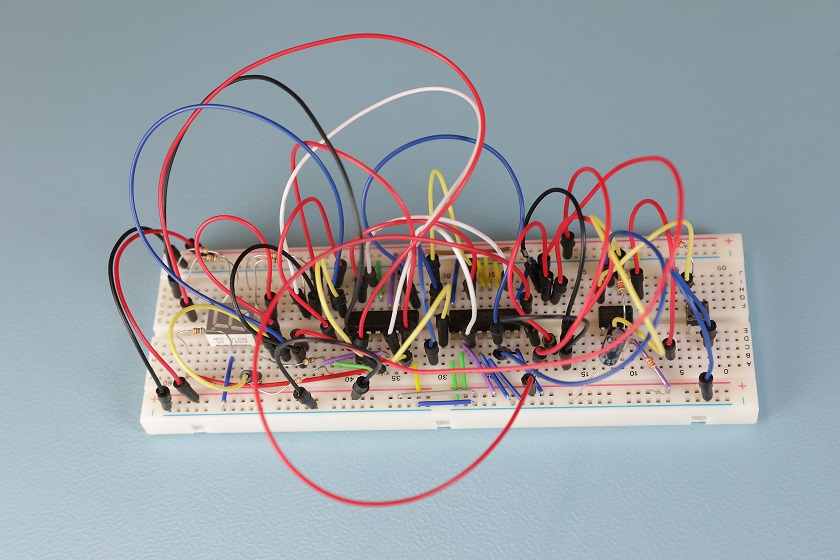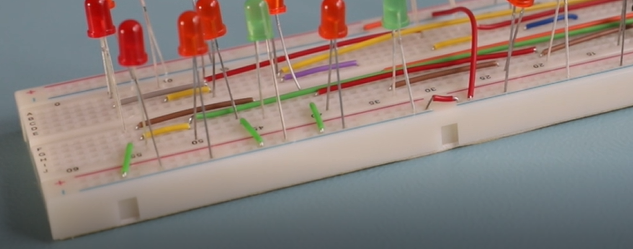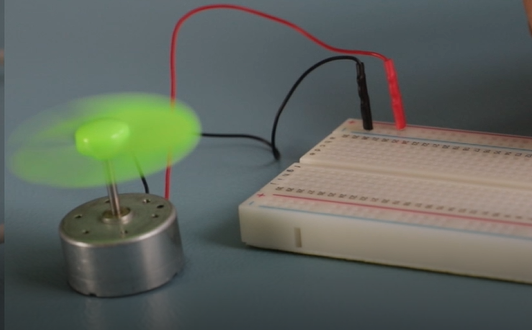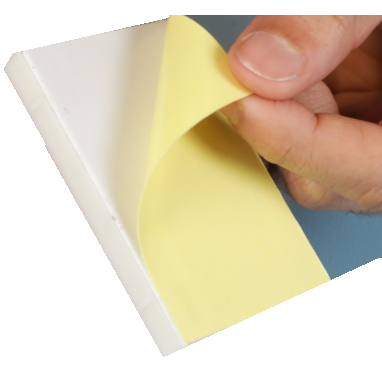Go to the previous chapter: Common mistakes.
-
Color-code your circuit. Use red jumper wires for the positive (+) bus and black wire for ground (-). The color does not affect the current flowing through the jumper wire, but with color-coding you can easily trace circuit connections.
-
Use a flexible jumper wire to connect the breadboard with external components to make movement easier and flexible.
Breadboard connected to an external DC motor -
Use solid wires of appropriate length for the internal connections to avoid a “spaghetti” circuit.
 |
Spaghetti circuit
 |
Solid wires make the circuit look better.
-
If you are using mini breadboards and you find that your circuit requires more roomspace, there are nubbins and slots on the sides that allow you to connect multiple breadboards together to enlarge the active surface.
-
If your project requires you to stick the breadboard permanently (e.g. for a robotic car), you can peel off the paper layer on the back and use the adhesive surface to attach the breadboard to any surface.
Back adhesive layer





